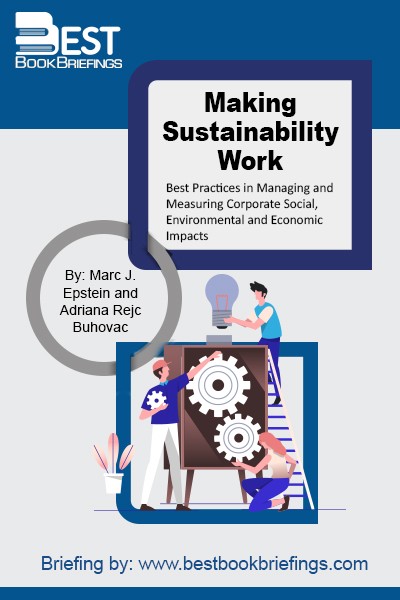Making Sustainability Work
Best Practices in Managing and Measuring Corporate Social, Environmental and Economic Impacts
Number of pages: 308
Publisher: Berrett-Koehler Publishers
BBB Library: Economics and Investment
ISBN: 9781609949938
Editorial Review
In recent years, corporations of all sizes and orientations have become more sensitive to social issues and stakeholder concerns, and they are collectively striving to become better corporate citizens (in some cases, urged on by shareholder pressure or government regulations). The best practices in corporate sustainability are no longer the exclusive domain of companies like Ben & Jerry's or Body Shop as they were a decade ago; now, large, multi-national companies like G.E. and Wal-Mart are leading the way with significant financial and organizational commitments to social and environmental issues. To help managers and academics keep their eye on the ever-moving target of sustainability, award-winning author and academic Marc Epstein's provides an authoritative and comprehensive guide to implementing corporate sustainability initiatives and to measuring both their social and financial impacts.
Book Reviews
Books on Related Topics

A black swan is a highly improbable event with three principal characteristics: It is unpredictable; it carries a massive impact; and, after the fact, we concoct an explanation that makes it appear less random, and more predictable, than it was. The astonishing success of Google was a black swan; so was 9/11.

2008 and 2009 will be remembered for bear markets, a global credit crunch and some of the largest investment scams ever. But these scams are nothing new; from Charles Ponzi to Bernard Madoff to Sir R. Allen Stanford, they've been repeated throughout history, and there will certainly be more to come

The world’s leading economies are facing not just one but many crises. The financial meltdown may not be over, climate change threatens major global disruption, economic inequality has reached extremes not seen for a century, and government and business are widely distrusted. At the same time, many people regret the consumerism



